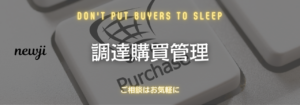- お役立ち記事
- Development of super hydrophilic and super oleophobic coatings and application in the ship exterior market

Development of super hydrophilic and super oleophobic coatings and application in the ship exterior market

目次
Introduction to Super Hydrophilic and Super Oleophobic Coatings
In recent years, advancements in material science have paved the way for innovative coatings that offer incredible properties.
Among these, super hydrophilic and super oleophobic coatings stand out due to their unique abilities to repel water and oil, respectively.
These coatings have important applications in various sectors, and the maritime industry is starting to leverage these technologies for ship exteriors.
Understanding Super Hydrophilic Coatings
Super hydrophilic coatings are characterized by their ability to attract and spread water across a surface rather than allowing it to bead up.
This results in a thin film of water that can instantly wash away contaminants and dirt.
Super hydrophilic surfaces have a water contact angle of less than 10 degrees.
These coatings are commonly used in applications where anti-fogging and self-cleaning properties are crucial, such as in automotive and architectural glass.
How It Works
The underlying mechanism involves enhancing the adhesive forces between water molecules and the coated surface.
The coating is typically composed of nanoparticles that attract water molecules, encouraging them to spread.
This capability helps in more uniform water coverage and quicker drying times after exposure to moisture.
Demystifying Super Oleophobic Coatings
In contrast, super oleophobic coatings are designed to repel oil-based substances.
These coatings function by having a low surface energy that rigorously repels oils, making them useful in situations where preventing grease and oil buildup is crucial.
Applications range from smartphone screens that resist fingerprints to protective clothing that remains stain-free.
Functionality
Super oleophobic coatings work by maintaining an oil contact angle greater than 150 degrees.
The coating forms an invisible barrier on the substrate that resists oil penetration.
The coatings are made from materials like titanium dioxide or other complex polymers known for their durability and resistance against harsh conditions.
Applying Coatings in the Ship Exterior Market
The maritime environment is harsh, with challenges such as corrosion, biofouling, and the accumulation of salt, oil, and other substances.
Super hydrophilic and super oleophobic coatings present innovative solutions to these age-old challenges.
Benefits of Super Hydrophilic Coatings for Ships
Water heap-up on the surfaces of ships often leads to the accumulation of dirt and an increased risk of biofouling.
By applying super hydrophilic coatings, water can more effectively wash away marine debris and microorganisms that otherwise would adhere to the hull.
This leads to reduced drag in the water, improved fuel efficiency, and a decrease in greenhouse gas emissions.
Super Oleophobic Coating Advantages
Similarly, super oleophobic coatings can significantly reduce maintenance needs and enhance the longevity of a ship’s exterior by preventing oil and grease adhesion.
Oil spills and leaks are common in shipping operations.
By using these coatings, ships can remain cleaner and less prone to the deterioration associated with oil buildup, reducing the frequency and cost of cleaning.
Environmental Impact
The application of these advanced coatings aligns with the global push for environmentally friendly maritime solutions.
Reducing fuel consumption directly reduces carbon emissions.
Moreover, reducing reliance on chemical cleaning agents leads to less environmental contamination and aligns with sustainable practices in maritime operations.
Challenges in Implementation
While the advantages are compelling, there are challenges to the adoption of super hydrophilic and super oleophobic coatings in the maritime industry.
One primary concern is the cost associated with application processes, as these coatings require precise techniques and equipment.
Moreover, while durable, over time and in extreme conditions, these coatings may degrade, necessitating reapplication and further investment.
Research and Development Efforts
Continuous R&D aims to tackle these challenges by developing more cost-effective and longer-lasting coating solutions.
Efforts are underway to create formulations that can withstand harsher climates seen in various maritime routes and further enhance the functional lifespan of these advanced coatings.
Conclusion
The development of super hydrophilic and super oleophobic coatings represents significant innovation in materials science with the potential to revolutionize the maritime industry.
These coatings offer sustainable, cost-effective solutions to combat fouling and degradation, enhance fuel efficiency, and reduce maintenance demands.
Despite the challenges, their adoption can contribute to a greener, more efficient future for global shipping operations.
As research progresses, these coatings will likely see broader implementation, aligning with industry trends toward improved performance and environmental stewardship.
 資料ダウンロード
資料ダウンロード
QCD管理受発注クラウド「newji」は、受発注部門で必要なQCD管理全てを備えた、現場特化型兼クラウド型の今世紀最高の受発注管理システムとなります。
 NEWJI DX
NEWJI DX
製造業に特化したデジタルトランスフォーメーション(DX)の実現を目指す請負開発型のコンサルティングサービスです。AI、iPaaS、および先端の技術を駆使して、製造プロセスの効率化、業務効率化、チームワーク強化、コスト削減、品質向上を実現します。このサービスは、製造業の課題を深く理解し、それに対する最適なデジタルソリューションを提供することで、企業が持続的な成長とイノベーションを達成できるようサポートします。
 製造業ニュース解説
製造業ニュース解説
製造業、主に購買・調達部門にお勤めの方々に向けた情報を配信しております。
新任の方やベテランの方、管理職を対象とした幅広いコンテンツをご用意しております。
 お問い合わせ
お問い合わせ
コストダウンが利益に直結する術だと理解していても、なかなか前に進めることができない状況。そんな時は、newjiのコストダウン自動化機能で大きく利益貢献しよう!
(β版非公開)




